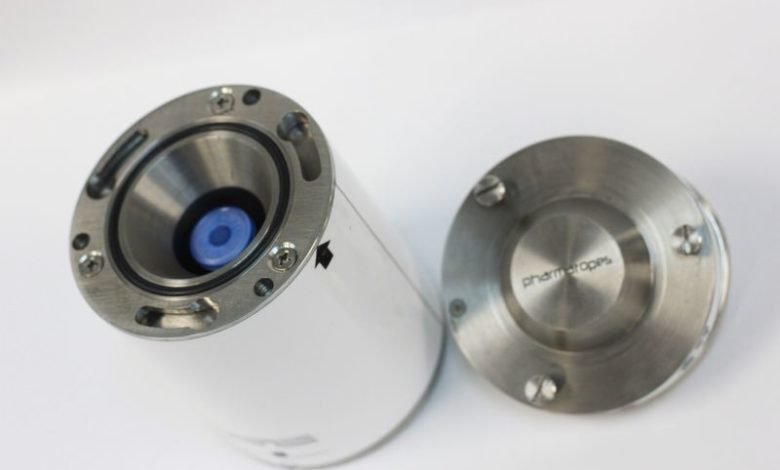Can Tungsten Be Used As A Nuclear Radiation Shield?

With technology making the right leaps in development, the first thing that we have to ensure along with it is safety. To be very specific, the development in the arena of medical technology, nuclear engineering, fishing industry, equipment of golf sports, indicative imaging and non-dangerous testing businesses, etc. The need to provide the right material with the highest density is of optimum importance.
To maximize protection from radiation, we need materials that are dense and strong. This is where tungsten becomes a practical choice for nuclear engineering and other industries.
Why Go for Tungsten?
Tungsten-heavy alloys are heavy metals with a thickness of up to 18.89 g/cm3. Due to tungsten alloy’s high density, high flexibility, machinability, making it the safest and reasonable choice for tungsten nuclear radiation shielding materials. It is apt for customizing and is highly adaptable into finer and accurate parts. Sometimes lead fails to do so, whether it is in terms of optimizing weight in larger or smaller cavities of radiation shields or in terms of strength. Tungsten ticks all the boxes necessary for optimum protection.
Why Do We Need Protection from Radiation?
Ionizing radiation, widely used in nuclear radiation and medical technology, can be life-threatening as it kills live tissues. In highly exposed cases, radiation causes “tissue” effects also called “deterministic” effects, resulting in acute radiation syndrome. In lower exposure cases, there are chances of radiation-induced cancer, also called stochastic effects. To put it in simpler terms, if radioactive particles are not controlled enough, cancer can and will dominate over us all.
Alternatives to Tungsten Alloy Shields
The usual alternatives of tungsten alloy shields are iron and lead as they have been used as radiation shield materials for centuries. Lead’s density is up to 11.34 g/cm3, which is much lower than tungsten which has a greater absorption capacity. Tungsten can be the go-to material if you want as thin a shield for protection as possible. But it is a highly expensive material. So if you want a thin radiation protective shield within a tight budget, you can go for Lead. Though keep in mind that protection will also be compromised with lead shield material.
Lead vs Tungsten as Nuclear Radiation Shield
- Lead has a density of 11.34 g/cm3, whereas tungsten is 18.89 g/cm3.
- Lead is a soft metal, whereas tungsten is a hard metal.
- Lead is not that great in terms of customization, while tungsten is adjustable and adaptable into finer parts being a strong and flexible material.
- Tungsten is an expensive material as it is only derived from China, lead is a relatively cheaper option as it is available all over the world.
- Tungsten is harder to machine due to its hardness, lead is easier to deform due to being a softer metal than tungsten.
Advantages of Tungsten Alloy’s High density
- Higher level of density
- Eco-friendly and benign to human beings
- Greater machinability
- Good mechanical properties
- Easily flexible
Application of High-Density Tungsten Nuclear Shielding
Offering amazing benefits, tungsten is the best material to place your bet in. It is used in various ways, such as:
- High voltage electrical contacts: Being a hard metal with the highest melting points of contact materials, Tungsten is used in arc exposed areas and it is resistant to erosion as well. It has excellent separation ability for safety.
- Balancing weights: Balancing weights made from tungsten do not swing or create imbalance and vibration.
- Balls in bomb: Bombs packed with tungsten powder which acts with the same effect as shrapnel. It often dissolves within the human body, making it difficult to discover injuries.
- Substitutional material for Uranium: Tungsten with lower toxicity and higher density can potentially replace the depleted uranium in projectile armors.
- Electroheat upsetting anvil block: The recent greatest invention in powder metallurgy is the usage of tungsten alloy material for metal powder.
- Protection shield from radiation ( nuclear, medical, and industrial): In the medical field, doctors, nurses, and patients must be protected from harmful radiation to avoid getting cancer. It is an excellent material for radioactive material shielding and also ensures ALARA goals in the workplace.
- Electrodes for resistance welding: Tungsten carbide offers superior oxidation resistance while maintaining shape throughout the resistance welding process.
- Motor parts: Tungsten alloy’s high density makes it suitable for various motor parts such as airplane flaps, mobile phone vibration systems, jet engines, automotive parts, crankcase balancing weights.
- Golf club loads: Due to tungsten’s flexibility, its hollow cavities are used to shift weight to the heel and toe and away from the face.
- Helicopter rotor systems: Due to tungsten alloy’s higher density and less volume, it is practically the best option for an aircraft’s ballast.
- Boat weights: Tungsten weights are smaller in size and denser in weight, producing more sound underwater. It is better at detecting underwater objects.
- Tungsten alloy boring bar, bucking bars: They are mainly used on the backside of the metal rivets to avoid countering force.
- Airplane control surfaces: In smaller planes, tungsten weights are used in the ailerons and the elevator which makes the aircraft float in the air and control its elevation.
Conclusion
Tungsten is an expensive and yet dense and hard material, making it one of the best radiation shielding materials to choose from while ensuring ALARA goals in the workplace. Tungsten alloy’s high density, less volume, machinability, low toxicity, heat resistance, and super adaptability makes it the winner among all the other competitors.
For best deals on Tungsten nuclear shielding, visit AgescanTungsten website for further information.





